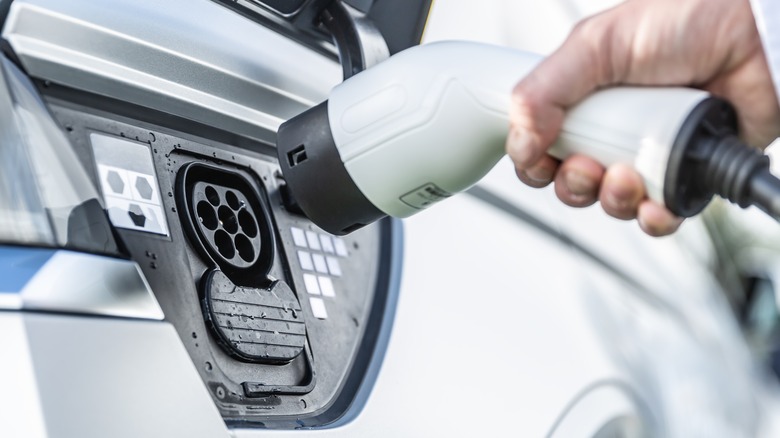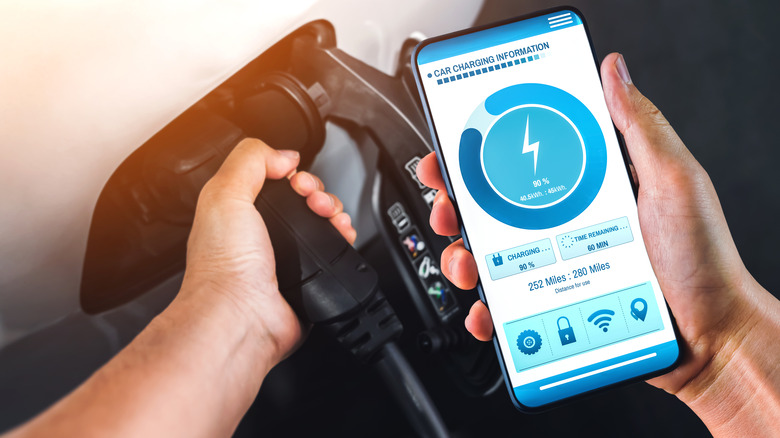Why Charging Your EV To 100% Isn't Always A Good Thing
Have you ever wondered why EV makers give information on how long it takes to charge their vehicles to 80% instead of 100%? It has nothing to do with presenting shorter charging durations and instead relates to battery health. EVs are truly amazing vehicles; they're silent, have zero emissions, pack loads of technology, and their performance is better than ever. With that said, EV batteries are still a complicated part of the machine.
These batteries are expensive, can degrade, require maintenance, and recharging them requires some basic know-how. The most expensive part of an electric vehicle is the battery, which takes up 40% to 50% of the total car price, according to Bloomberg. Research from the U.S. Department of Energy reveals that the cost of an electric vehicle's lithium-ion battery pack dropped 87% from 2008 to 2021, the latter of which had an estimated cost of $157 per kWh.
Natural degradation, damage, and poor maintenance may lead to a battery replacement, and costs are high. For example, Recurrent Auto reveals that the cost of replacing a BMW i3 battery can be as high as $16,000. Changing the battery on a Chevrolet Bolt also costs $16,000, while a Tesla Model 3 battery can range from $12,000 to $22,000, a Model 3 battery can cost $15,799, and a Hyundai Ioniq battery can cost around $2,850. Lithium and other elements used in batteries — under heavy global stress — are the reasons why batteries are so expensive. However, good maintenance can prevent battery damage and slow down natural degradation.
Fully charging your EV's battery is risky
Level 3 fast chargers are advertised by EV automakers for their ability to rapidly recharge an EV to around 80% in 30 minutes. But as Kelley Blue Book notes, using a fast charger won't necessarily result in a rapid charge if the battery is under 20% or over 80% when plugged in. This is a safety feature to protect the battery, and it also encourages drivers to keep their car's battery within these optimal percentages. Driving Electric says that to keep batteries in top shape, they should not be overcharged. Unlike gas cars, where drivers will usually top up the tanks, that is not recommended in EVs. Fully charging an EV battery can damage it and degrade it. Ideally, drivers should let the battery drop to 20% and then charge it to 80%.
When an EV battery is charged to 100%, it heats up. A study published in Nature explains that temperature has a "significant impact on the performance, safety, and cycle lifetime of lithium-ion batteries." Temperatures affect the Solid Electrolyte Interphase (SEI), not to be confused with the lithium plating. SEI lets lithium ions pass through but protects the anode from corrosion. When the SEI is modified, the protective characteristics are loosened up, and normal chemical reactions are affected. Temperatures can also cause stress fractures and fissures, as Recurrent explains. Fissures and cracks can also cause unwanted chemical reactions and take up a part of the normal flow of energy, eventually degrading the battery.

